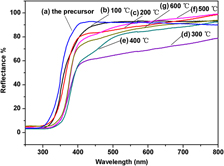Crossref Citations
This article has been cited by the following publications. This list is generated based on data provided by
Crossref.
Sun, T.
and
Chen, K.
2013.
A novel low‐energy hybrid process for the removal of organic contaminants in ultrapure water systems.
Asia-Pacific Journal of Chemical Engineering,
Vol. 8,
Issue. 6,
p.
804.
Liu, Yue
Liu, Jie
Yao, Weiyuan
Cen, Wanglai
Wang, Haiqiang
Weng, Xiaole
and
Wu, Zhongbiao
2013.
The effects of surface acidity on CO2 adsorption over amine functionalized protonated titanate nanotubes.
RSC Advances,
Vol. 3,
Issue. 41,
p.
18803.
Wang, Jia
Fan, Chenyao
Ren, Zhimin
Fu, Xinxin
Qian, Guodong
and
Wang, Zhiyu
2014.
N-doped TiO2/C nanocomposites and N-doped TiO2 synthesised at different thermal treatment temperatures with the same hydrothermal precursor.
Dalton Trans.,
Vol. 43,
Issue. 36,
p.
13783.
Li, Beibei
Zhao, Zongbin
Zhou, Quan
Meng, Bo
Meng, Xiangtong
and
Qiu, Jieshan
2014.
Highly Efficient Low‐Temperature Plasma‐Assisted Modification of TiO2 Nanosheets with Exposed {001} Facets for Enhanced Visible‐Light Photocatalytic Activity.
Chemistry – A European Journal,
Vol. 20,
Issue. 45,
p.
14763.
Souza, Juliana S.
Krambrock, Klaus
Pinheiro, Mauricio V.B.
Ando, Rômulo A.
Guha, Suchismita
and
Alves, Wendel A.
2014.
Visible-light photocatalytic activity of NH 4 NO 3 ion-exchanged nitrogen-doped titanate and TiO 2 nanotubes.
Journal of Molecular Catalysis A: Chemical,
Vol. 394,
Issue. ,
p.
48.
Yan, Caiyun
Chen, Ku-Fan
Lai, Chia-Hsiang
Lai, Shiau-Wu
Chang, Qing
and
Peng, Yen-Ping
2014.
Photocatalytic degradation of Rhodamine B by microwave-assisted hydrothermal synthesized N-doped titanate nanotubes.
Journal of Environmental Sciences,
Vol. 26,
Issue. 7,
p.
1505.
Samsudin, Emy Marlina
Abd Hamid, Sharifah Bee
Juan, Joon Ching
Basirun, Wan Jefrey
Kandjani, Ahmad Esmaielzadeh
and
Bhargava, Suresh K.
2015.
Controlled nitrogen insertion in titanium dioxide for optimal photocatalytic degradation of atrazine.
RSC Advances,
Vol. 5,
Issue. 55,
p.
44041.
Yan, Xiaodong
and
Chen, Xiaobo
2015.
Encyclopedia of Inorganic and Bioinorganic Chemistry.
p.
1.
Lysak, I A
Lysak, G V
Malinovskaya, T D
and
Skvortsova, L N
2016.
Investigation of supramolecular structure of the rare and rare-earth elements nanoparticles carrier when modified using microwave irradiation.
IOP Conference Series: Materials Science and Engineering,
Vol. 112,
Issue. ,
p.
012017.
Shen, Zhangfeng
Wang, Guiqiang
Tian, Hao
Sunarso, Jaka
Liu, Lihong
Liu, Jian
and
Liu, Shaomin
2016.
Bi-layer photoanode films of hierarchical carbon-doped brookite-rutile TiO 2 composite and anatase TiO 2 beads for efficient dye-sensitized solar cells.
Electrochimica Acta,
Vol. 216,
Issue. ,
p.
429.
Souza, Juliana S.
Pinheiro, Mauricio V. B.
Krambrock, Klaus
and
Alves, Wendel A.
2016.
Dye Degradation Mechanisms Using Nitrogen Doped and Copper(II) Phthalocyanine Tetracarboxylate Sensitized Titanate and TiO2 Nanotubes.
The Journal of Physical Chemistry C,
Vol. 120,
Issue. 21,
p.
11561.
Dhandole, Love Kumar
Chung, Hee-Suk
Ryu, Jungho
and
Jang, Jum Suk
2018.
Vertically Aligned Titanate Nanotubes Hydrothermally Synthesized from Anodized TiO2 Nanotube Arrays: An Efficient Adsorbent for the Repeatable Recovery of Sr Ions.
ACS Sustainable Chemistry & Engineering,
Vol. 6,
Issue. 12,
p.
16139.
Kadari, Ramaswamy
Ravi, Gundeboina
Venkataswamy, Perala
Velchuri, Radha
Munirathnam, Nagegownivari Ramachandra
and
Vithal, Muga
2019.
Effect of ion (Ag+, N3−) doping on the photocatalytic activity of the Ruddlesden–Popper-type layered perovskite K2Nd2Ti3O10.
Comptes Rendus. Chimie,
Vol. 22,
Issue. 9-10,
p.
667.
Xiang, Quanjun
Ma, Xiyang
Zhang, Dainan
Zhou, Haiping
Liao, Yulong
Zhang, Huaiwu
Xu, Shuyan
Levchenko, Igor
and
Bazaka, Kateryna
2019.
Interfacial modification of titanium dioxide to enhance photocatalytic efficiency towards H2 production.
Journal of Colloid and Interface Science,
Vol. 556,
Issue. ,
p.
376.
Joshi, Bhupendra
and
Lee, Soo Wohn
2019.
Modification of P25 titania in presence of hydrazine for Staphylococcus aureus inactivation.
Functional Materials Letters,
Vol. 12,
Issue. 03,
p.
1950030.
Souza, Hellen T.S.
Oliveira, Sibila A.A.
and
Souza, Juliana S.
2020.
Modulating the photocatalytic activity of Ag nanoparticles-titanate nanotubes heterojunctions through control of microwave-assisted synthesis conditions.
Journal of Photochemistry and Photobiology A: Chemistry,
Vol. 390,
Issue. ,
p.
112264.
